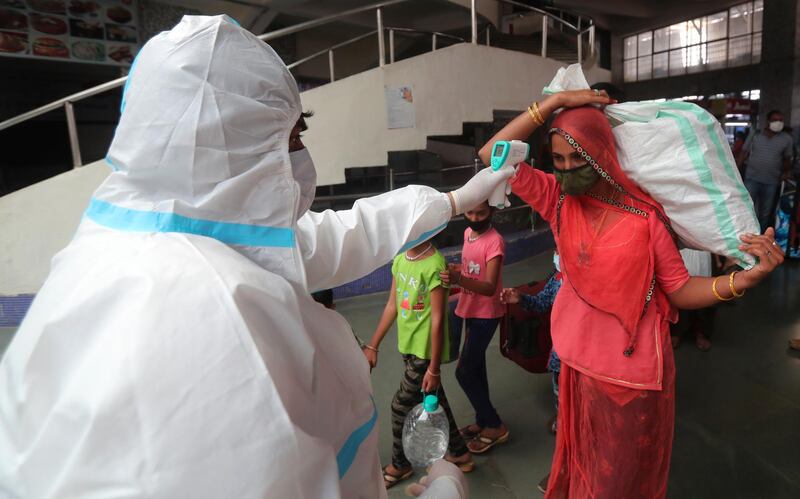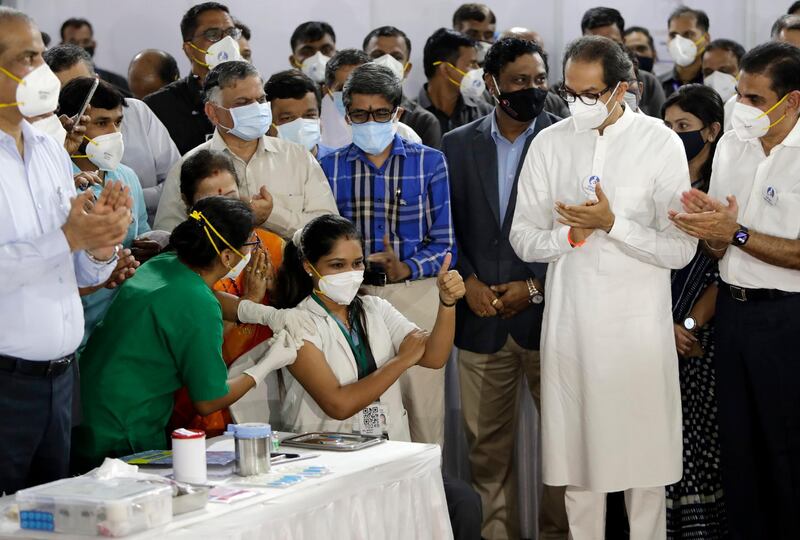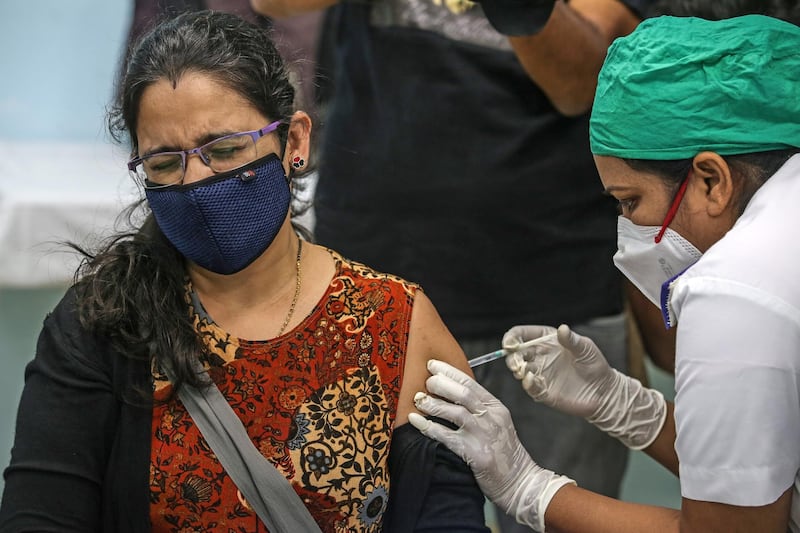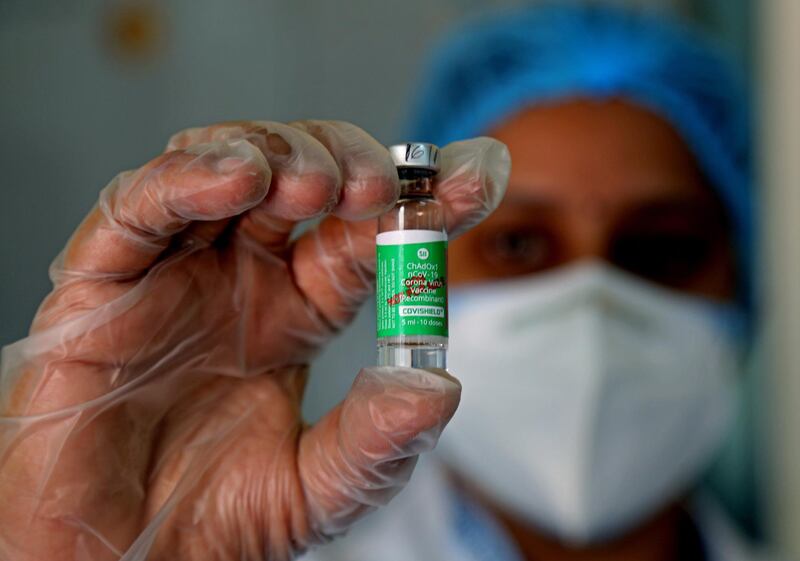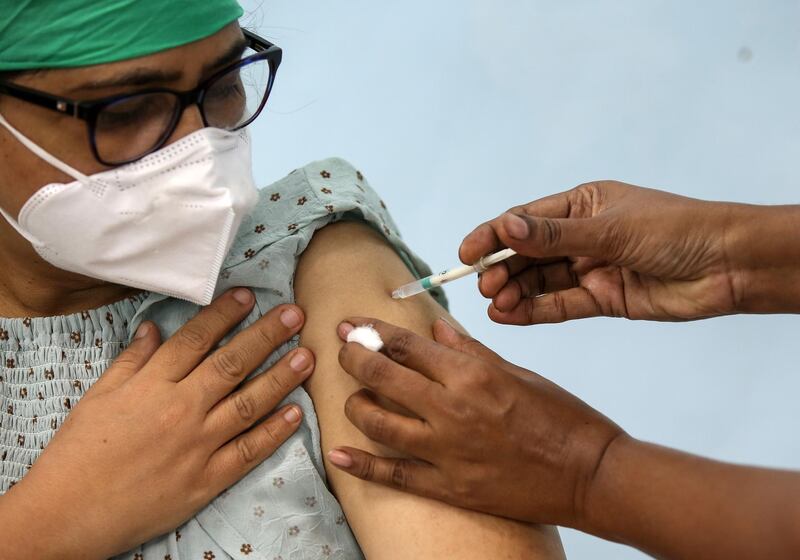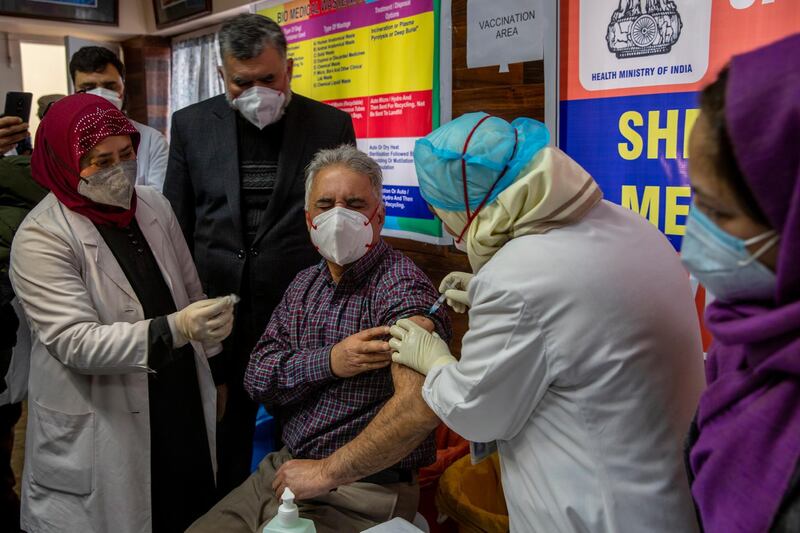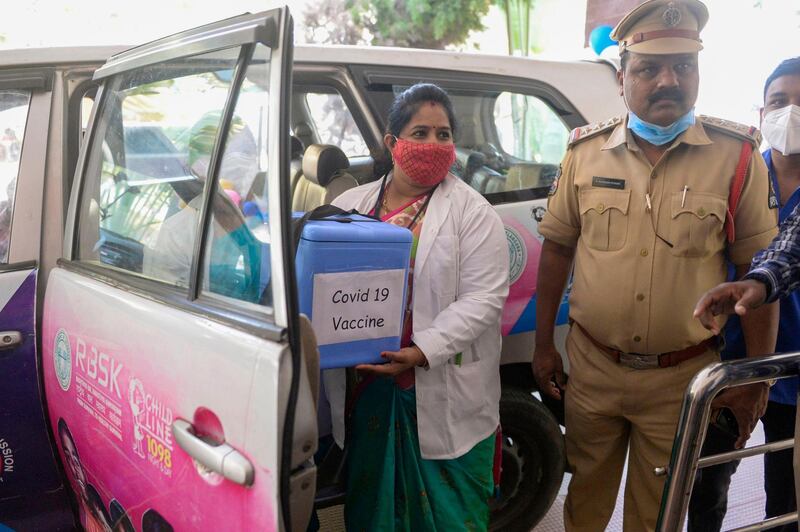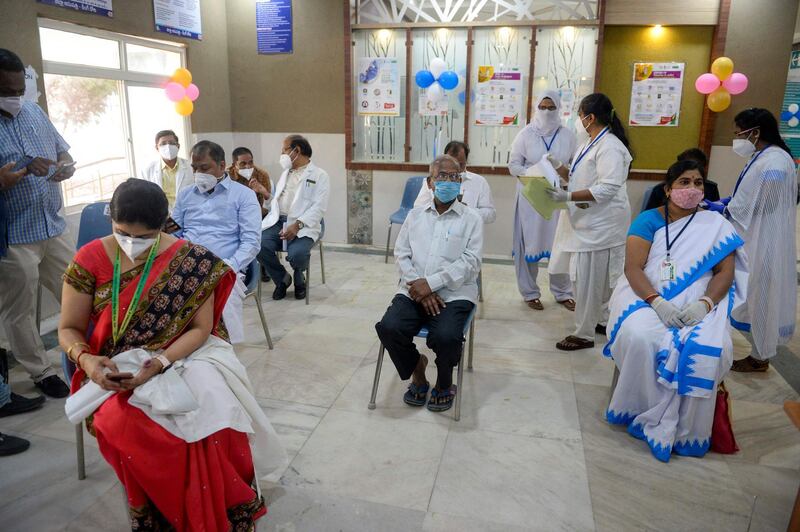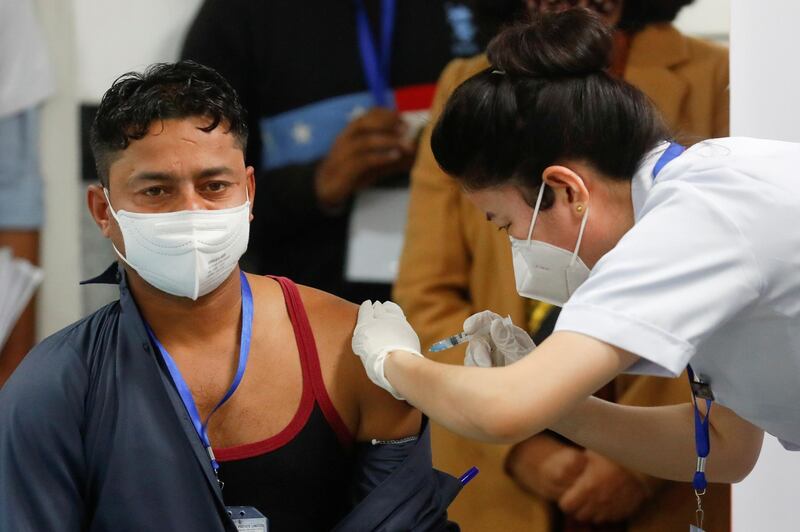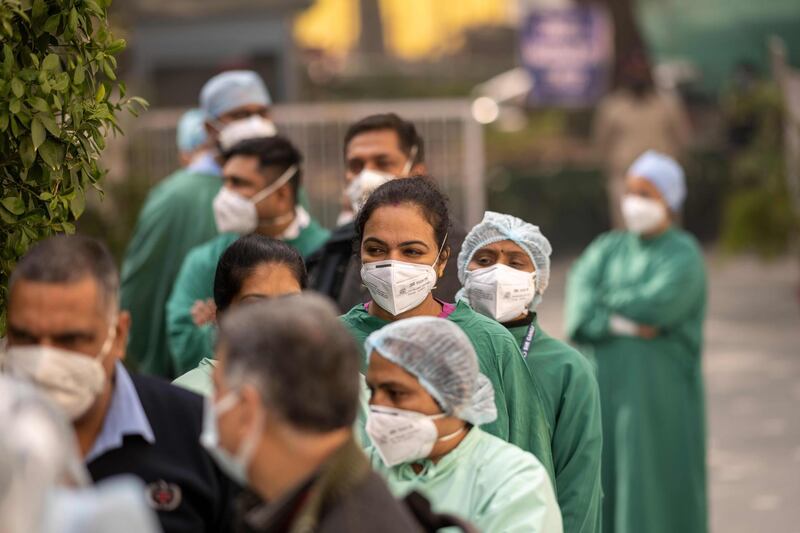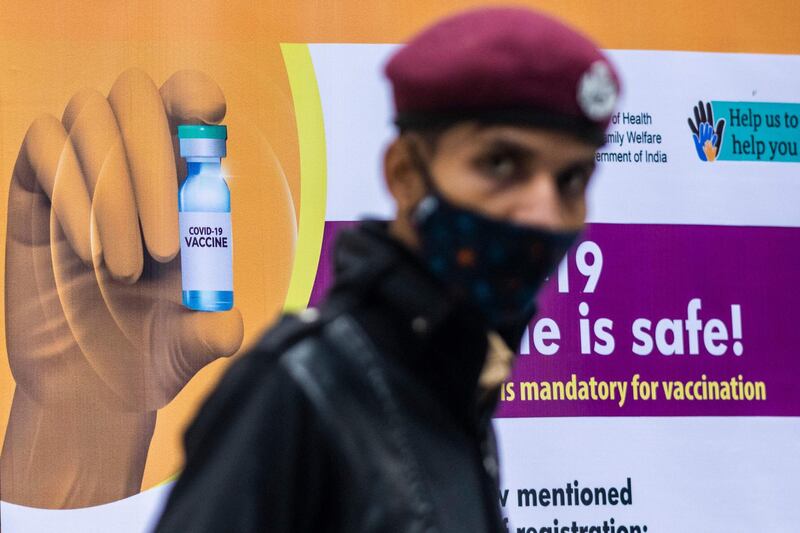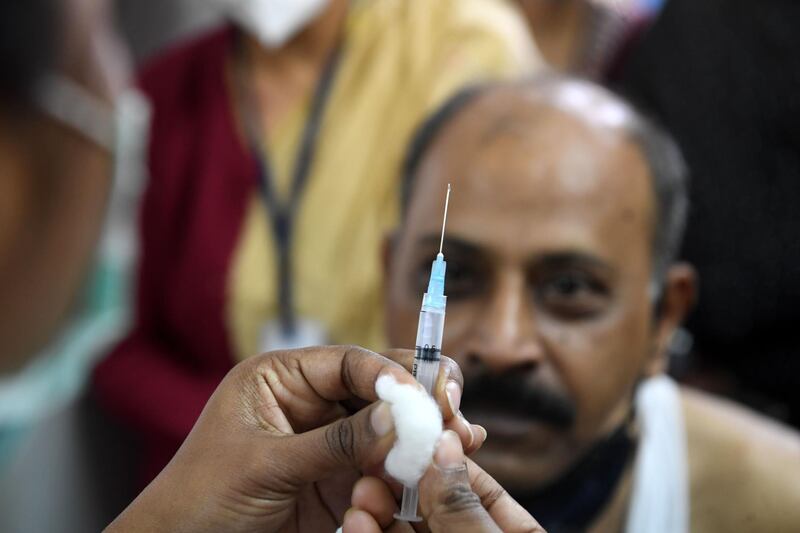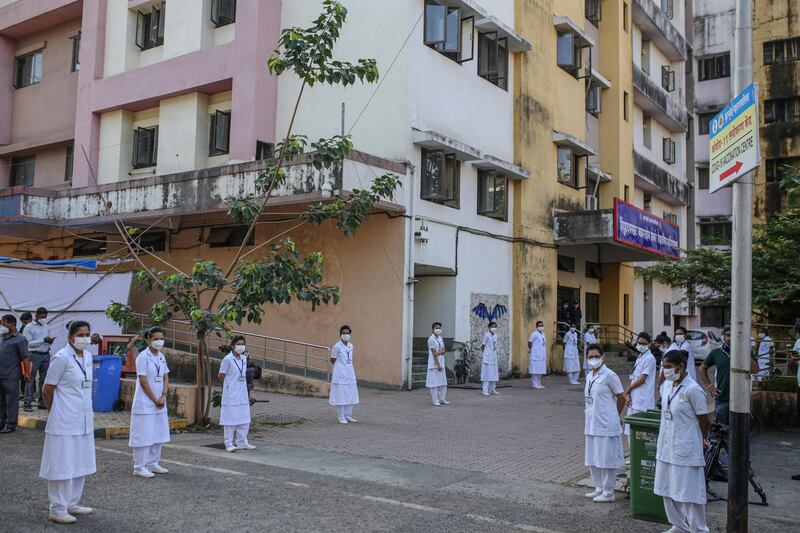Five months ago, doctors at Sir Ganga Ram Hospital in Delhi were struggling to find beds for Covid-19 patients as the country's health services buckled under a wave of infections.
More than 250 patients a day tried to find space in the 700-bed private hospital.
But now only 18 Covid-19 patients have been admitted.
The drop in daily infections and hospital admissions has – to some extent – baffled doctors who still worry about another wave.
"It was a very difficult time for us. We hope that situation never comes back again," Dr Devinder Singh Rana, chairman of the hospital, told The National.
India recorded its first coronavirus case in January last year and by September the daily tally of infections increased to nearly 100,000.
More than 1,000 Covid-19 patients died from the virus every day at the peak of the outbreak in October, pushing the country's healthcare system to a tipping point. Hospitals ran out of space and struggled to treat patients because of a shortage of ventilators and oxygen.
The authorities imposed a weeks-long nationwide lockdown on March 24 last year. The restrictions slowed the runaway infection rate, but tens of thousands of people continued to contract the virus.
In October, experts gave a warning that Hindu festivals, air pollution and a chilly winter would exacerbate the situation, particularly after the government began to relax restrictions on movement to boost the economy.
But infection rates dropped to an average of 10,000 new cases a day in February.
New Delhi, a city of about 22 million people that was once an infection hot spot, did not report a single Covid-19 death for the first time in 10 months in early February.
Most businesses, colleges and public parks across the country are open. People thronged to shopping malls and markets after the government lifted restrictions on public transport, including the crowded local trains in Mumbai.
No one, including government officials, has been able to explain the drop in infections.
But epidemiologists said there could be several reasons for the drop in cases, including demographic characteristics and an innate immunity among Indians to combat viral infections.
Dr K Srinath Reddy, an epidemiologist and president of Public Health Foundation of India, said a predominantly young population ensured the country showed better resistance against the virus compared with the US, Italy or France.
"India's population above 65 is just 6 per cent. It is not that India is unique, other South Asian countries [with younger populations] have had a milder experience with the pandemic," Dr Reddy told The National.
Similar trends have been reported in densely populated Pakistan and Bangladesh, where the median age is below 25.
India's median age is about 28.
Dr Reddy said transmission of the virus may have been slowed in rural areas – where 70 per cent of Indians live – because it is not as crowded and in cities because of measures such as social distancing and mask-wearing.
“People work in open fields and houses are better ventilated in rural areas, so the virus doesn’t spread or transmit easily as it doesn’t concentrate. In urban areas, many of the people who were susceptible probably got infected and healed,” he said.
Many experts predicted that half of India's 1.3 billion population would contract the virus, but the country currently has about 136,500 active cases out of 11 million infections to date, the second-highest after the US.
India has conducted about 200 million tests. Gaps in testing and fudged data raised questions about the true number of cases, but experts said that was insignificant.
"The testing rate has been no different in mid-September 2020 when India was reporting about 95,000 cases per day, compared with, say, mid-January 2021 when the caseload was about 15,000 per day," Dr Shahid Jameel, a virologist and director of Trivedi School of Biosciences at Ashoka University, told The National.
“Some recent reports have suggested fake testing, as the case was in Bihar, and there has been a heavy dependence on less accurate antigen tests compared with the more reliable RT-PCR tests.
"This can’t be the only explanation. The fall in numbers is too much, compared with reduced testing."
It also recorded nearly 156,000 deaths, a fatality rate of below 1.5 per cent and one of the lowest in the world, Health Ministry data showed.
A study of the presence of Covid-19 antibodies in the population conducted by the Indian Council of Medical Research found that one out of every five Indians above the age of 18 may contracted coronavirus by early January.
The drop in cases led to speculation that herd immunity could have played a part but virologists are sceptical.
They say a second outbreak cannot be ruled out, with people celebrating the end of the pandemic during a national vaccination programme.
“Herd immunity cannot be for the entire country. It is a concept used only for clusters or communities,” Dr Jameel said.
He said cases could soar if measures such as handwashing, mask-wearing and social distancing were ignored.
India has detected 187 cases of the UK variant, four of the South African one and a sole patient with the Brazilian variant.
Maharashtra, one of the worst-affected states, has already reported a sharp increase in infections in the past week.
“Though cases are going down, it is by no means over. There is also the danger of community transmission of the UK variant or a similar home-grown variant. That could change the dynamics very quickly,” Dr Jameel said.
“This is the time to be very vigilant, and to keep wearing masks, avoid crowded indoor places and practise hand sanitation."
